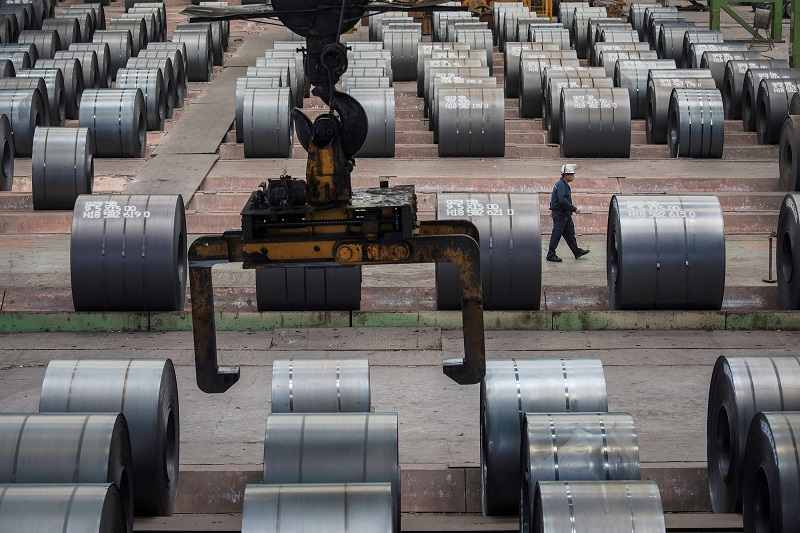China’s factory inflation hits 17-month low, consumer prices speed up

A worker walks past steel rolls at the Chongqing Iron and Steel plant in Changshou, Chongqing, China August 6, 2018. Picture taken August 6, 2018.
16:11 JST, August 10, 2022
BEIJING (Reuters) – China’s factory-gate inflation eased to a 17-month low in July, defying global cost pressures as slower domestic construction weighed on raw material demand, although consumer price gains hit a two-year high as pork supplies tightened.
The producer price index (PPI) rose 4.2% year-on-year, the National Bureau of Statistics (NBS) said on Wednesday, after a 6.1% uptick in June and missing analyst forecasts for a 4.8% increase.
China’s producer price growth has slowed from a 26-year high hit in October last year, giving policymakers some leeway to stimulate the flagging economy even as central banks elsewhere scramble to hose down rampant inflation with aggressive interest rate hikes.
While China’s relatively benign inflation has largely been due to weak domestic demand, a moderation in global price pressures, such as falling oil prices, also contributed to July’s slowdown.
“Factory gate inflation will remain on a downward trajectory throughout the rest of the year amid a further drop in commodity prices, easing supply bottlenecks and a higher base for comparison,” Zichun Huang, China Economist at Capital Economics, said in a research note.
In a sign of the slowing momentum, PPI fell 1.3% month-on-month, its first monthly decline since January, with the biggest falls in the price of metals and petrochemicals.
In annual terms, coal mining and washing industry prices rose 20.7%, slowing 10.7 percentage points from June, while the oil and gas extraction industry jumped 43.9%, down 10.5 percentage points, according to a separate statement from NBS.
Input prices slumped in July, China’s official purchasing managers’ index showed last week, due to a decline in energy and raw material costs and pointing to an eventual fall in producer prices.Read full storyRead full storyRead full story
The world’s second-biggest economy has slowed considerably and narrowly escaped a contraction in the June quarter, weighed by strict COVID-19 controls, a distressed property market and cautious consumer sentiment.
The consumer price index (CPI) increased 2.7% from a year earlier, the fastest pace since July 2020 but missing forecasts for a 2.9% gain.
The main driver of consumer prices is food inflation, which rose 6.3% year-on-year, speeding up from a 2.9% uptick in June.
Driving the broader food surge were pork prices, which shot up 20.2% year-on-year, reversing a 6.0% decline in June as production slowed.
However, core CPI, which excludes volatile energy and food prices and is a better gauge of underlying inflation, remained soft, rising just 0.8%, slower than the 1.0% rise in June.
CONSTRAINED DOVES
While the People’s Bank of China (PBOC) is expected to keep monetary settings loose amid sluggish growth, there are limits on how much the bank can ease policy due to worries about capital outflows, as the U.S. Federal Reserve raises interest rates aggressively.
The PBOC will therefore likely rely on more targeted easing to support the recovery, even as consumer inflation tests China’s 3% tolerance threshold.
That means the prospect of a near-term across-the-board interest rate cut is low, given existing global inflationary pressures and interest rate hikes in other major economies, said Bruce Pang, a chief economist at Jones Lang Lasalle.
“In all, CPI inflation remains below the PBOC’s target of around 3%, providing it the policy space to remain accommodative,” Erin Xin, economist at HSBC, said in a note.
“With continued uncertainty from COVID-19 clusters as well as weak sentiment in the property market, there is still a need for the PBOC to stay accommodative.”



